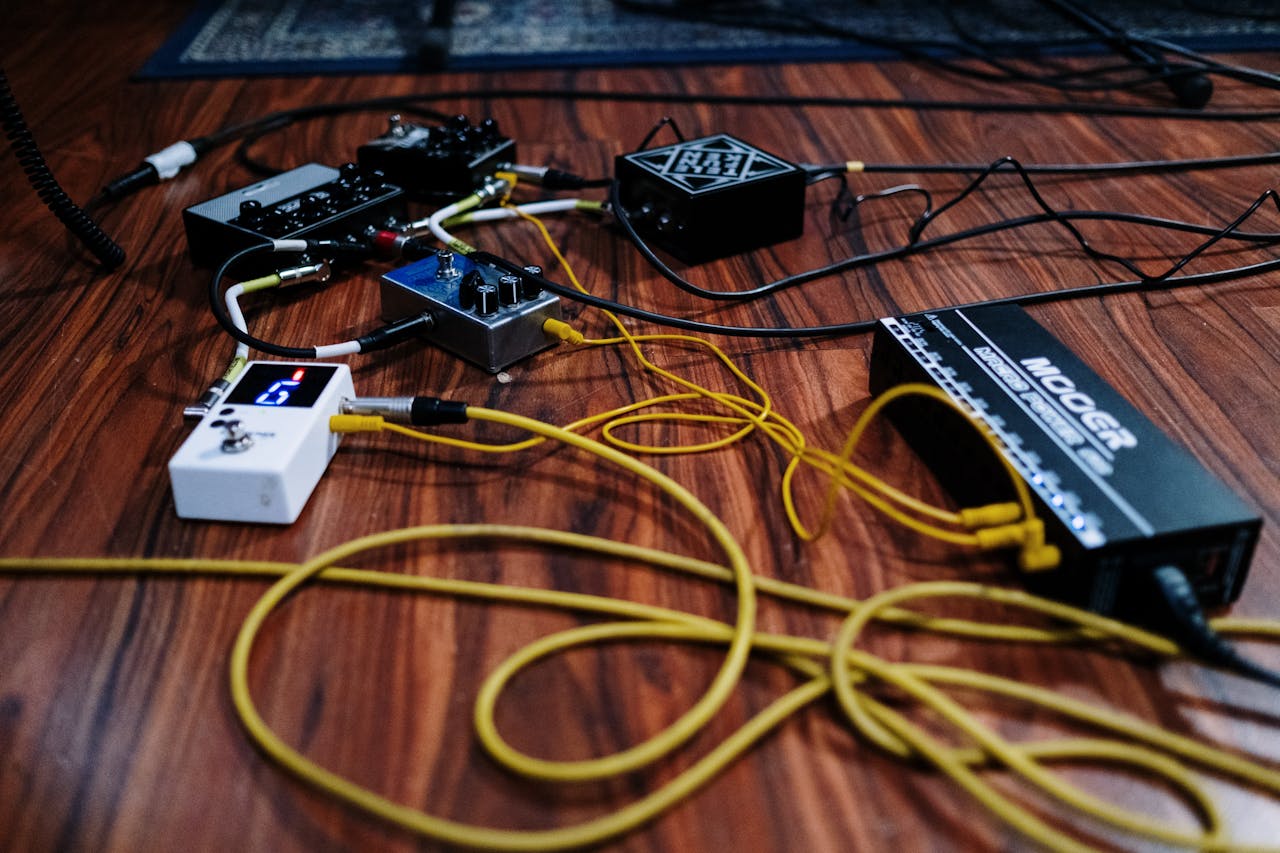Want your website to stand out among the rest? It’s time to go responsive.
A common question that comes up when thinking of making a website is “should I make it responsive?” The answer is an obvious yes if you want to give your user the best experience possible while also not losing any of your target audience.
Building for mobile users has become more important than ever with the insane growth rates of mobile Internet users worldwide. Users are using their devices in more ways than one and many are opting for multiple screens (one at work, another on the go, etc.) which means having a website that can be viewed on all screen sizes will put you ahead of your competitors.
Page Contents
What is Responsive Design?
Responsive design is an approach to web design aimed at crafting the visual experience of the website to provide a universal good experience for end-users across multiple platforms. The method sorts out essential elements such as navigation, layout, and images that should be consistent in order to replicate the same user journey on all devices.
A responsive website adjusts the layout to fit or provide an optimal viewing experience on a wide range of devices. This design approach attempts to address the ever-increasing diversity of web-enabled devices and their physical contexts, which typically encompasses three main categories: desktop computers, mobile phones, and tablets.
It also aims to provide high-quality experiences across these different networking environments by ensuring that websites are not only functional but also compatible with many types of browsers and technologies such as javascript, flash player, and java. Furthermore, it ensures consistency in navigation among mediums, for example; links should be easy to click on touch screen devices as well as mouse-controlled ones. Overall responsiveness should give the user a fluid and seamless experience across all mediums.
So that is what the responsive website design approach aims to do- it gives your content room to expand and grow (or shrink) in size based upon the user’s device preferences, so you never have to worry about creating specific sites for each page ever again because everything fits together seamlessly no matter which device is being used.
Why You Should Consider Having a Responsive Website
If you don’t already have one, consider setting up a responsive website as this could help grow your customer base and make life easier for users with mobile devices such as smartphones and tablets. Furthermore, Google favors websites that have a responsive design, so if you want to maximize your page rank, it’s definitely a good idea.
The Essential Elements in a Responsive Design
There are a number of things that go into making a website look and work well on any viewing device, but the following five elements play a vital role: intuitive navigation consistency in layout flexible images use of white space, and padding flexible images
Intuitive Navigation
Good mobile design is all about being able to deliver clear information to users with minimal effort. In order for this process to be as simple as possible, you need to make sure menus are large enough for touch screen devices and easy to see and understand. Your site should also include some sort of options menu where users can browse between pages and filter by content type.
Intuitive navigation is an important aspect of responsive design because users who visit your site probably won’t scroll through every page if they can’t find what they’re looking for quickly. It’s also important to make sure links don’t seem too close together because this could cause visitors to click on the wrong link.
The purpose of a website is to provide users with information. When that information is presented in a way that’s difficult or impossible for users to find, they’ll leave quickly and probably not come back anytime soon. An important element of responsive web design is “intuition.” Navigation should be easy to use no matter what device users are accessing your content from because it allows them to easily get where they want to go.
Consistency in Layout
One of the most important things to remember when you’re making a website responsive is consistency. A well-designed site will feature consistent navigation, menu placement, size, and color scheme throughout all pages. If you keep these elements the same across every page it will not only look better but also allow users to continue following links without confusion if they’ve flipped over onto another screen. If anything varies from one page to the next, make sure that these differences stand out so as not to be too disorienting for either party.
Consistency refers to how information is laid out on the page which makes it easier for visitors to scan and find what they’re looking for quickly. Some ways you can achieve this are through font styles, colors, images, and more. These design choices help create a hierarchy between different types of content so that users know where they should be focusing their attention at any given time.
As the size of a user’s screen changes, your website should scale as well. A responsive design allows users to see the same content no matter what device they’re using to view it. While you can create multiple site templates with different layouts for different screen sizes, this often leads to inconsistency and lack of continuity between them all.
Flexible Images
Images are an essential part of any website: they add personality and help give your audience a visual representation of what you’re trying to express. However, one major issue with the standard image has always been that they were designed for specific screen sizes and therefore do not resize well without distortion.
Images are often large files, so making sure your site performs well with them can be important depending on your website’s purpose and context (i.e., if you have ads or other elements on top of an). If some images are too large, they could slow your site down or make it hard for visitors to access the other content on the site. To avoid this issue, you can create multiple copies of an image at different sizes (i.e., desktop, mobile), which is what we call “responsive images.”
Responsive sites adapt seamlessly to any size or type of display; however, images will always look better at their original resolution — especially those that contain text (such as graphs and charts). If an image won’t appear at its intended size on each unique device, put it behind a link so that mobile users are directed to download it instead.
Use of White Space and Padding
This is another important aspect of good design: allowing your images and text room to breathe. When working on a responsive design, it’s common for designers to increase the amount of padding between elements as the space available decreases. This helps avoid clutter and keeps content from feeling cramped or crowded.
White space refers to “the amount of blank space between design elements.” It’s important because it helps users focus on one element at a time by providing visual separation between them. Adding padding around items also helps to separate them from each other visually so that users aren’t overwhelmed with information simultaneously. You can use this principle when designing buttons, input fields, and more so that clicking/selecting something doesn’t feel too crowded.
Avoid overcrowding your pages with too much content. White space is an important element of web design that allows users to rest their eyes when they’ve reached the end of a line or paragraph. More importantly, it makes your site appear less crowded, allowing readers to focus on what you’re saying instead of how everything is organized. Using white space can help you draw attention to key items without cluttering up the screen.
Flexible Images
Images are often large files, so making sure your site performs well with them can be important depending on your website’s purpose and context (i.e., if you have ads or other elements on top of an). If some images are too large, they could slow your site down or make it hard for visitors to access the other content on the site. To avoid this issue, you can create multiple copies of an image at different sizes (i.e., desktop, mobile), which is what we call “responsive images.”
The images on your website will look different depending upon the user’s device. If they won’t scale appropriately for each unique display size, put them behind links so that mobile users are directed to download them instead. Users should be able to access the same content no matter what type of device they’re using. Don’t overcrowd your pages with too much content; white space is an important element of web design that allows users to rest their eyes when they’ve reached the end of a line or paragraph and makes your site appear less crowded, allowing readers to focus on what you’re saying instead of how everything is organized.
The best way to deal with responsive designs is to save images in multiple sizes so they can be resized as necessary without loss of quality. If you’re using a website building service such as Squarespace, it is possible to upload several versions of the same image and use them as needed.
Conclusion
Responsive design is a must-have element in modern website design. By following these simple guidelines, you will be able to create an intuitive site that works well on all screen sizes without losing any of its appeals along the way.
It is the best way to ensure your business is up to date, user-friendly, and provides a high-quality experience on any platform it’s used for! We hope to see many more companies moving forward making their websites mobile device friendly as well as desktops! This shouldn’t be seen as an added cost but rather an added. People shouldn’t have to worry about where they are using your website or what device they are using! People are on the go, you need to catch up with them.
We at Pixel Street provide the best website designs and development services in town. We offer affordable prices and high-quality standards for every step of the process, from consultation to providing a fully customized site at an unbeatable price!
Author Bio: Khurshid Alam is the founder of Pixel Street, a web design company. He aspires to solve business problems by communicating effectively digitally. In his leisure, he reads, writes, and occasionally plays a game of table tennis.
Image Source: freepik.com











Leave a Comment